Hifi Tuning, Bals and IeGO Schuko connectors compared
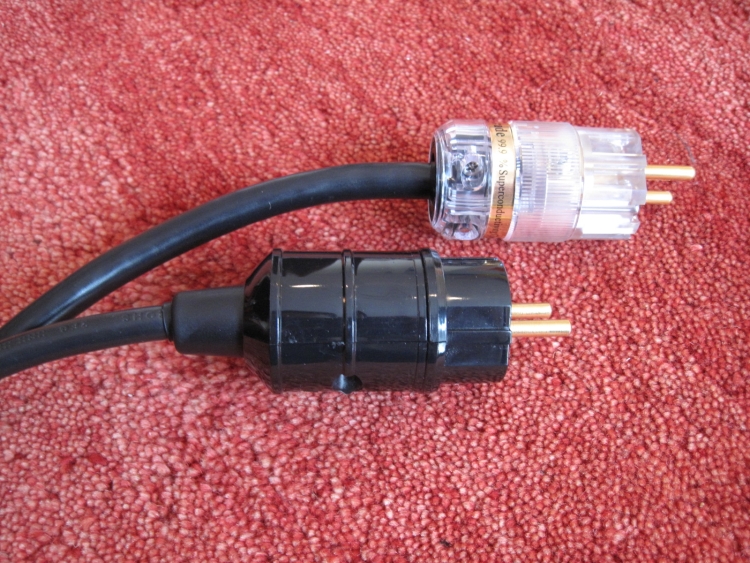
Schuko connectors compared part 2: IeGO 24k Gold, Hifi Tuning Gold II, Bals 73
A follow-up comparison in which I compare the Hifi Tuning Gold with newcomer IeGO 24k Gold and do a cross-check with the Bals standard connector.
This review is a follow-up of the Kupp, Bals and Hifi Tuning Gold II Schuko connector review.
Connectors under review:
-IeGO 24k Gold (50 euro)
-Hifi Tuning Gold II (28 euro)
-Bals Type 73(12 euro)
All connectors were tested in combination with their own completely confectioned power cables, and both Lapp and Belden were used. Each cable was assembled in the same way in the same length, plugged in for the same phase, and burned in for the same duration. During testing, only one cable at a time was connected, each time in the same position of the extension block. A Wadia 861 CD player was used as a source, as well as a Jeff Rowland Synergy 2i. Both were well-run in and kept warm at all times.
I was especially curious to find out how newcomer IeGO would perform against the Hifi Tuning Gold. The latter is extremely refined but can be slightly too restrained and is not suited for all systems. Would IeGO be the same, worse or better?
Using Belden power cable
Belden power cables have a tendency to sound hard in the treble which is why I avoid using standard connectors with this cable. So I compared a Belden cable with Hifi Tuning Gold schuko and IeGO IEC with a Belden cable that has IeGO connectors at both ends.
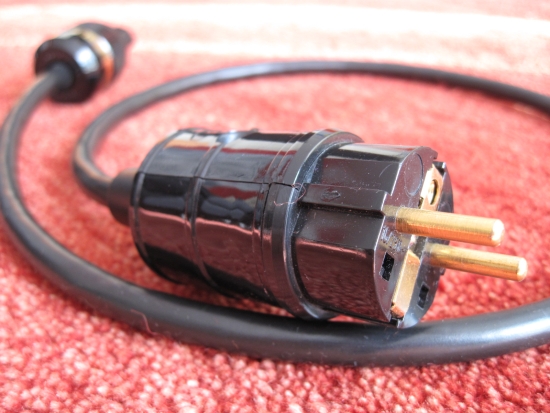
When I listened to the standard Belden with IeGO IEC and Hifi Tuning schuko (pictured above) it was very recognizably a Belden cable as I know it: fast, dynamic, and open. The IeGO IEC did a fine job at toning down the excessive brightness that the cable normally has and I thought it made for a well-balanced sound that had no real downsides, apart from a slight lack of color and weight at the bottom.
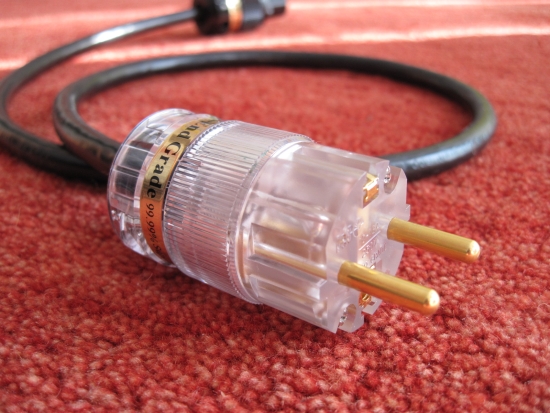
Swapping to the same cable but with IeGO at both ends, now with IeGO schuko, there was a huge difference! The addition of an IeGO gold schuko had so much impact on the sound that it was simply incredible. The sound became fresher and more finely nuanced and there was a higher degree of resolution available that made subtle sounds so much more interesting. Surprisingly, all these traits did not come at the expense of dynamics or speed. In fact: the IeGO was a lot faster and more dynamic sounding than the HT gold. However, the IeGO addition did make for a slightly less airy and refined treble.
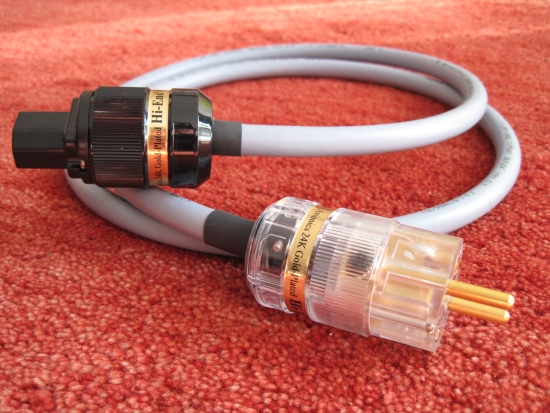
Above: IeGO with Lapp cable
Using Lapp power cable
Of course I did a double-check with Lapp cable to see if the results would be valid for Lapp as well. Hifi Tuning gold connectors are too much of a good thing in combination with Lapp because Lapp is already relaxed and the addition of a HT schuko makes for a cable that fits only the most open and transparent systems. I wondered if the same would be true for IeGo schukos but our experience with the Belden cable already prepared us for the opposite. First I listened to the standard Lapp with IEC-Gold and Bals schuko. This is already a very well-balanced cable and it works well with many components and in many setups, and you really wouldn’t see any major flaws in its presentation. That is unless you compare it to the same cable with IeGO connectors.
First, I listened to the Lapp with IeGO gold schuko and still the IEC-Gold. I feared for some rounding of transients and dynamics but the IeGO turned out to be just as dynamic as the Bals, but fresher and much more finely nuanced. Tiny little wooshes would now stand out of the mix as opposed to being buried. And again these traits did not come at the expense of anything. The Bals is slightly, and I mean very slightly more rounded in the bass but it is still very, very dynamic and fast. I would not label the IeGO schuko rounded, but I can see one may feel the Bals to be slightly dry.
Then it was time to listen to the fully-fledged Lapp with IeGO connectors at both ends. This result was more mixed. Indeed the swapping of IEC-Gold to IeGO gold made for an even more nuanced and finely detailed delivery, with much smoother highs, cleaner mids, and more resolution. But I thought the IEC-Gold can have the upper hand in some systems where the added attack at the higher frequencies is needed to open up the sound. In the test system (magnetostatic speakers) there is so much resolution and treble air at hand that I don’t need additional emphasis on the highs but if your system is already tending toward the dark, I’d suggest using IeGO as a schuko and perhaps something else as an IEC.
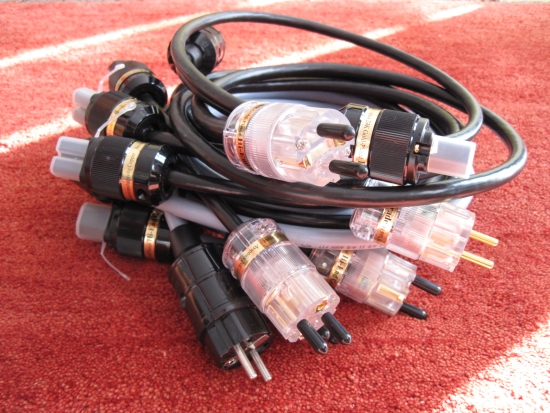
Conclusion
IeGO connectors have all the color and a portion of the subtle fluidity that Furutech offers but without their restraint in dynamic expression. I was already enthusiastic about the IeGO IEC’s but now it turned out that the Schukos may be even better, albeit at a price. But after these tests, I couldn’t help but conclude that connectors make out at least half the sound of a cable. So do yourself a favor and use at least one IeGO on your cable!
Some advice
With Belden, one really needs to use good connectors, such as those from IeGO. The connectors lift the performance significantly. With Lapp cable the results are more mixed: if your system has enough resolution and transparency, go for IeGO at both ends. However, if your system already tends toward the dark, you’re better off using IeGO on one side only. That could be Schuko or IEC; they’re both fantastic connectors, but contrary to what I had originally thought, I have the impression that the schukos have the most impact on the sound.
Next
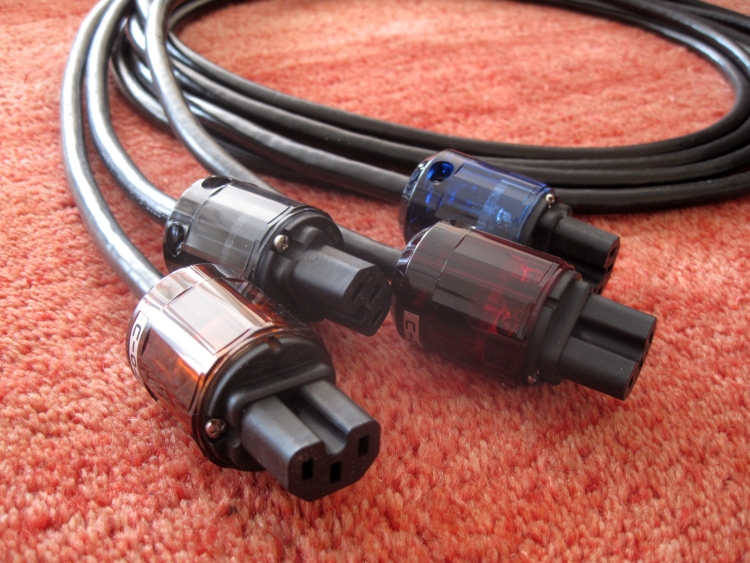
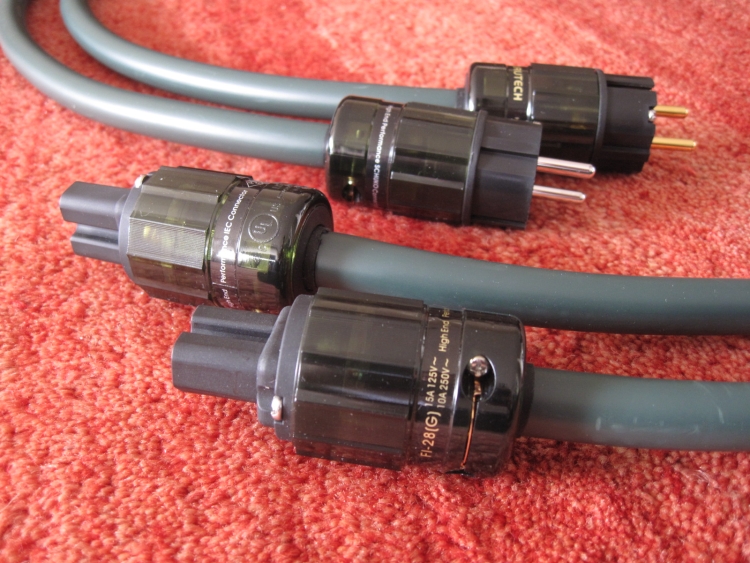
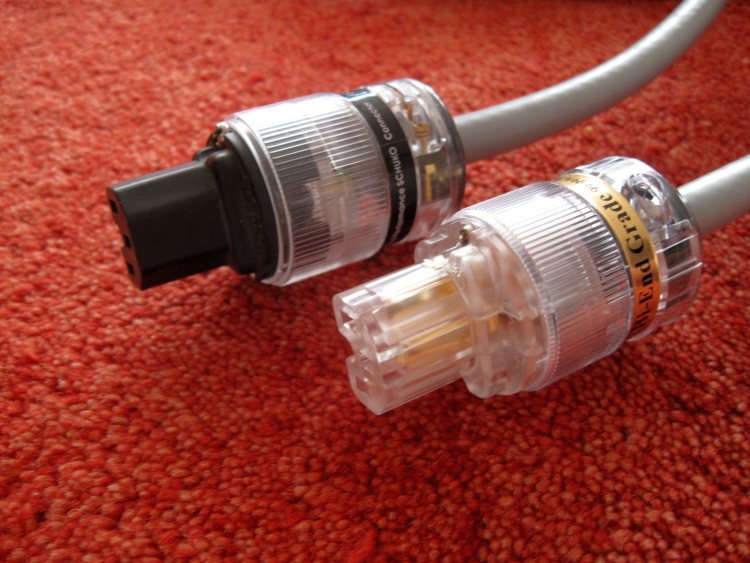
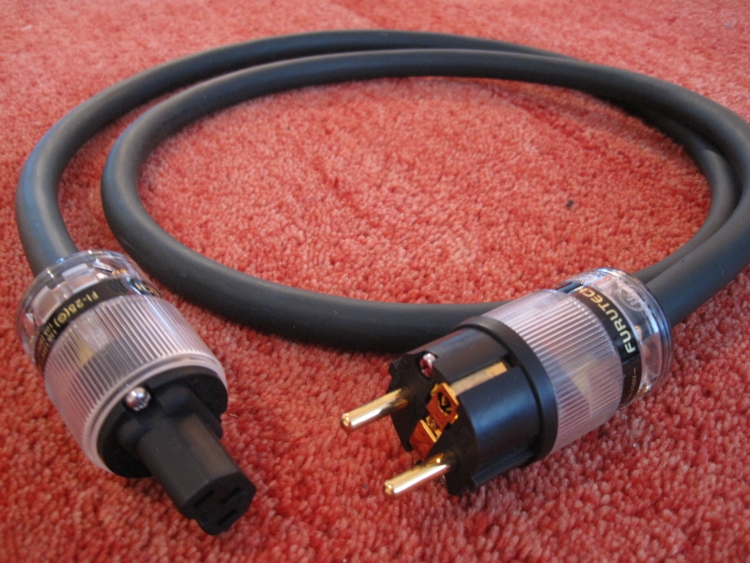
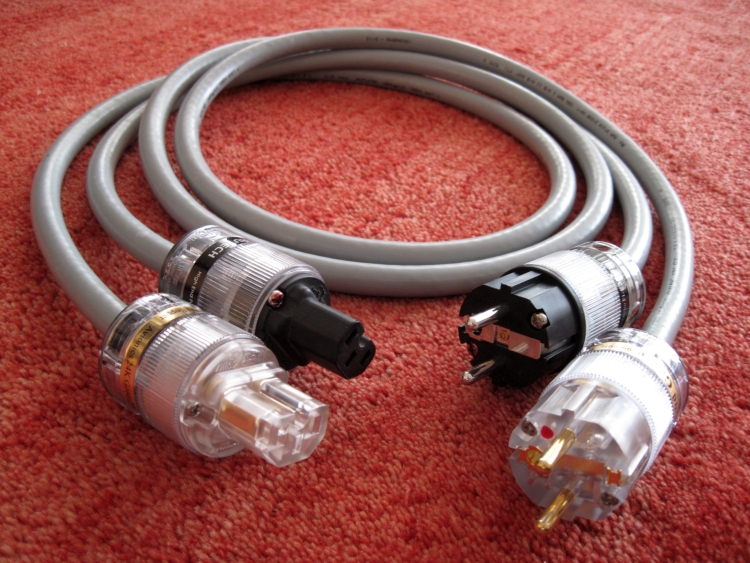
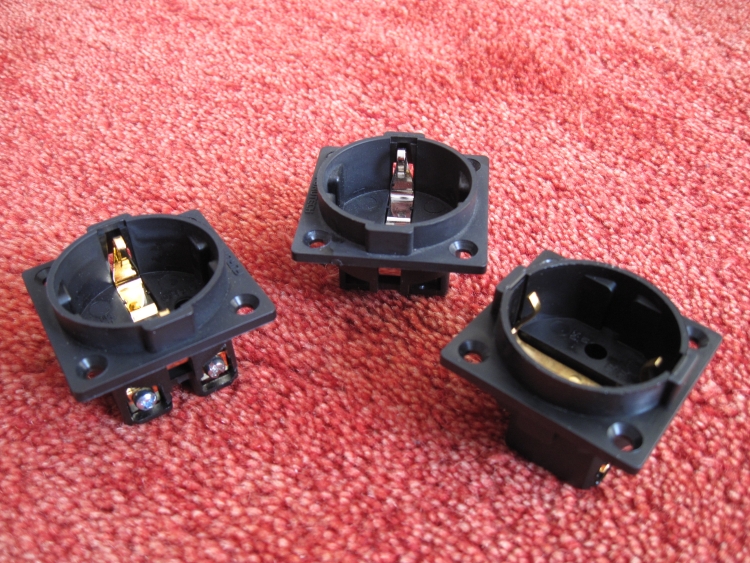
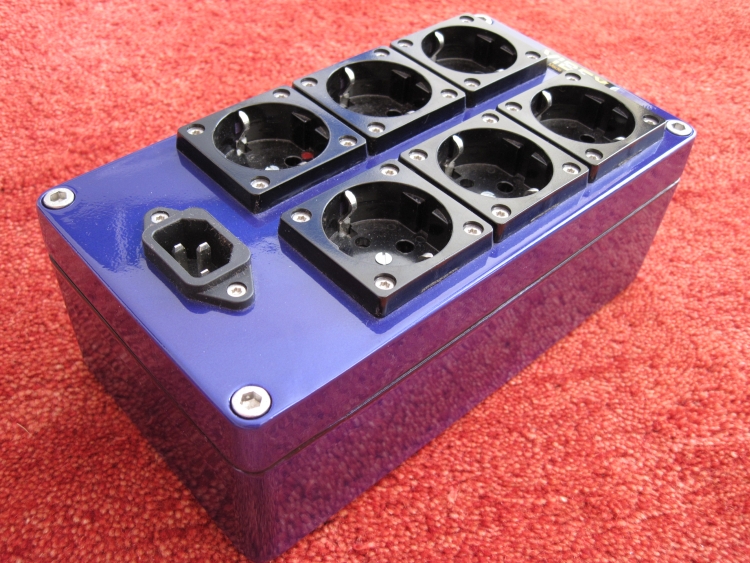
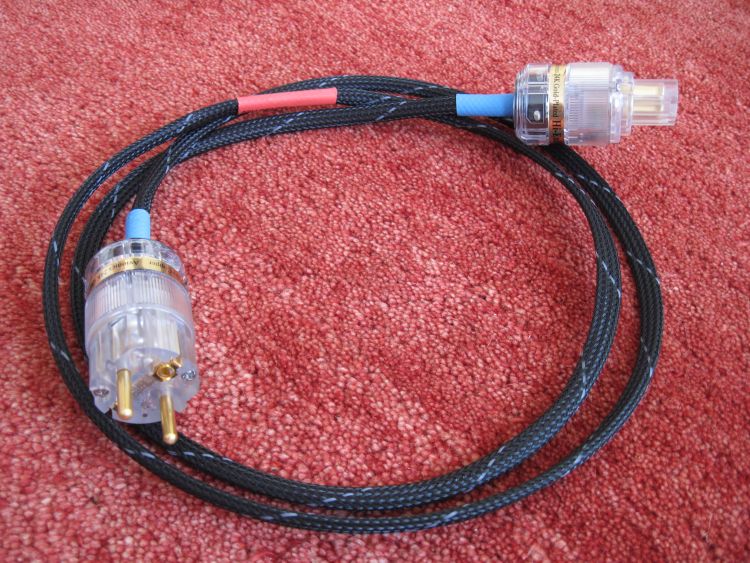
Wanted to add my experience with Hifi Tuning Supreme. Connected it to Furutech FP-TCS31, and some gold Neotech connector. Using it with Ferrum Hypsos hybrid PSU on Cabasse active loudspeakers that are pretty lean sounding. Using Furutech with Gold II gave it all the naturality, spark and colors with details..It was just a desktop system for my office, but i really enjoyed the sound of violins..wood and colors but also all the details. Like the best of SET-sound on a Class D and SPS.
Unfortunately had to sell the Ferrum Hypsos and all the spark is gone now so that i dont listen to Cabasse anymore.
Furutech and Gold II now lies around since i dont have any other lean system.
The Bals website not admit to a model 73 Schuko plug. There is a 7372, with contacts of “brass nickel plated”. Is this the current version? I wanted to find out the materials used so I could look for a comparable plug in the US.
Hi Brandon, the 7372 is indeed the correct connector. Bals have recently changed the outer appearance but the pin conductors and plating are unchanged. I compared the old and new connectors and they sound the same. Brass is the conductor material and Nickel is the plating. Mundane it may seem, but I find there’s nothing wrong with this standard composition for power connectors.
Thank you.
I realize you may not know all of these answers, but any help is appreciated.
US plugs are available in plain brass but I can’t find any in nickel-plated brass. I can get brass or copper plain, or plated in gold, rhodium, or silver. And some have multiple layers. But not just nickel plate.
Plain brass is standard here, so too many choices in that. Do you know if plain brass will sound as good as nickel-plated?
I am not sure what to look for: do connectors with internal parts that all have a bigger cross section sound better than parts with a small cross section?
Lastly, I have other power cord questions that you may have experience with, re shielding, and re upgrading an older preamp and amp that have fixed two-wire cords. Should I add to this section or are there better spots for them?
Hi Brandon, in the EU (or in the Netherlands and Germany at least), it is common to have Nickel plating for the standard connectors, mostly where pins are concerned, but it is often also applied in wall outlets. Nickel conductivity is not on the level of silver or gold but there are more important aspects than that. Strength, for instance. Nickel is very hard and does not wear off easily.
Precious metal platings all have their specific signatures: gold is smooth and a little warm (and less “attacky”, silver is airy and open, and Rhodium can be even more refined and gentle than silver but arguably a little clean. Of course, these are generalizations that do not always hold true.
I realize that USA connectors are usually bare brass or alloy variants. Plain brass is fine good but tarnishes over time. There is nothing special about the material and die-hard audiophiles feel that it is inferior but its great quality is that it is very strong. For instance, brass female contacts will have a much stronger grip than pure copper alternatives. And for me, and the aspects of sound that I value most (grip, vibrancy, expression) good grip is more important than conductivity. Theoretically, a larger cross-section is to be preferred although again a better grip will probably outweigh that.
I think your questions about power cables and shielding are more ideally posted under one of the Belden cable articles. Happy to respond there.
1. Brass can tarnish but in electrical use it works for decades here in the US, especially when actively used. Now I don’t live within 5 miles of the sea – the sea air is often hard on metals. But I do construction in an area that extends to the sea and over the decades I have not heard of any excess electrical trouble for those who live closer to the sea.
2. I agree on tight connections.
Also you want the metal (brass, nickel) to be fairly shiny, not dull / oxidized. (Except silver which also conducts well when oxidized.) “Noble metals” don’t need help except they may need cleaning.
A loose connection tale: I bought some gold-plated copper banana plugs but they won’t keep their grip more than a few days. I think the only reason they are working is that the jacks are also gold plated so there is gold to gold contact, and gold does not oxidize. I plan to replace them with spades – probably rhodium over copper. (Rhodium because I want to maximize treble energy available for my Acoustat speakers without turning up the treble knob.) Hoping a rhodium-plated spade on a gold-plated jack does not sound worse.
3. Thorough searching turned up two 15 amp US plugs with brass parts that will handle up to 10 AWG (5.3 – 6 mm2) wire. The Leviton 5266-C and the Leviton 5266-CA which is a right angle version. These are heavy duty nylon industrial plugs, black and white, not made pretty. Available through or at hardware stores, Home Depot, probably Grainger and others, and Amazon and E-Bay. About $12 -15 US. Leviton is a major supplier of electrical parts in the US. If you need to handle smaller wire gauges like 12 or 14 there many more choices.
P.S. I think the word you wanted in paragraph 3 is ‘variants’ or maybe ‘derivatives’.
Hi Brandon, this piece of text was written in 2009, and well deserving of a clean-up, so thanks for the hint. However, I did not find the ‘variants’ or maybe ‘derivatives’ section you refer to.
Look for “derivants” in your previous answer.
My last answer was supposed to go under your previous answer but I used the wrong “Reply” button.
Ah, it was in the comments section… ok, now corrected.
FI-50 NCF arriving 2day, i will report!
You’re going to be in for a nice surprise, Marek! I’ve only compared it briefly in a friend’s system and won’t do a full review but can share that the FI-50 NCF is a very different animal to the FI-38. Please do share your impressions!
It ended up on my 14-years old MacPro as power-cable! It’s a good because i already gave up Mac Pro as musical source, it could maximally output informative music on its USB. But Fi50’s with FP-TCS31 cable transformed it, so now i enjoy listening to music! It is home-office system with KingRex Amp with USB and W4S reclocker inbetween + John Blue speakers. Now I even plan to buy JCat USB XE card!
Hi Christian, i hope so! 😀 I got this Furu E TP-6 NCF distro block and it really opened up the sound so i figured out FI-50 NCF should work good with it. Rightnow i have WW Stratus 5.2 and it works better than Silver Electra 5.2 1.5m with non-standard connectors, where Silver Electra is usually the better cable. Apparently there is something about those connectors – the decisive link.
I will report on topic with TCS31 cable cos it is coming with it. I hope it will not sound too warm.
TCS31 is indeed a little too smooth and relaxed for my current taste, but as they say, YMMV:-)
Just coming to the same conclusion. TCS31 works good in my office-setup where i am using it with this HiFi-Tuning super golden connector you wrote about. It was magic with Hypsos power supply.
But in my main setup I have a lot of Cardas cabling so don’t need more smoothness. Figured out im gonna need something bit brighter like Silver Electra 5.2 2m. Also read about Crystal Cable Future Dream, but i think i’m gonna let it be what it is called due to the price 😀
Nice, thanks for the feedback, Marek!
Hello ,which is more dynamic between an iego or and a bals73? thank you
The IeGO 8085 is considerably more robust and dynamic sounding than the Furu FI38.
The IeGo is also more robust than a Bals 73, but not really more dynamic. I would say they are equally dynamic and lively but rather different in tonal balance. The IeGO is fuller and warmer, thicker, and darker. The Bals is faster, airier and more open, more even-handed, and more neutral.
hello ,why no fi50 ncf test ? I have a fi38 rodhium , she is the great!!!!!! thank you Franck
I am too busy reviewing audio components and speakers:-)
For you the fi50 she is the best ? I like the fi38 rodhium and OO4 oyaide . Thank you Franck
I have made only a brief comparison with the Oyaide C004 in a friend’s system, but in that system and context, the FI-50 was richer, more saturated, and more organic sounding. The C004 was perhaps more neutral but comparatively dry and matter-of-fact. Note that I do not feel the C-004 is dry or matter-of-fact by nature, only comparatively so. This means the FI-50 probably still has a good dose of the usual sweet and smooth Furutech house sound, even though it is more concrete, expressive, and direct than other Furutech connectors that I heard.
Hi Christian, do you think FI-50 NCF would suit to Silver Electra 5.2?
I have now this model with some older, “lesser” connectors, where the standard connectors have silver contact.
Was thinking to put Fi-50 NCF.
I’ve not heard the Silver Electra 5.2, so can’t comment… In any case, FI-50 NCF is the nicest Furu connector that I heard so far, but it remains a matter of taste and system synergy.
There is no “Best”. Only what works best for a given taste and system/component. That said, I no longer use Furutech as I find it too “polished” for my taste and system. I have not heard FI38 Rhodium.
Bonjour , la fi50 ncf est elle plus rapide ,transparente ,que la fi38 rodhium ? merci
Hi Franck, please can you post questions in English?
The FI50 is more open and expressive indeed. Faster, I’m not sure.
Hello and welcome. I have a kind question about the iego 8085 plug. From the text I understood that it will brighten the sound, because it is strong, dynamic and open. In turn, in the answers under the text, I read that it is darker and warmer than furutech … So how does this iego affect the sound? will it make my sound darker or brighter? I’m looking for a plug that will darken the sound and soften the hiss of sibilants. Thank you in advance for your answer.
In my tests and opinion, IeGO 8085, sounds robust, solid, full-bodied, dynamic, and tonally saturated. It is slightly rough in the treble (not particularly polished, refined, or airy) and just a little dark, compared to a standard/neutral connector, it does not make the sound brighter. For softening sibilants, you may also want to try different interlinks and speaker cables, as well as position the speakers further away and/or toed in less.
Thank you for the quick reply. I’ll keep looking then. Kind regards!! ps. And do You have any suggestions? My power cables are Furutech TCS31, Neotech NEP 3003, Belden 19364. They all have Furutech 28/38 G plugs.
Furutech TCS31 is very smooth and non-agressive sounding to me, Belden is rougher and can be slightly spicy in some systems. For recommendations on speaker cables and interlinks, please see my other reviews.
Ok! Thank You! 🙂